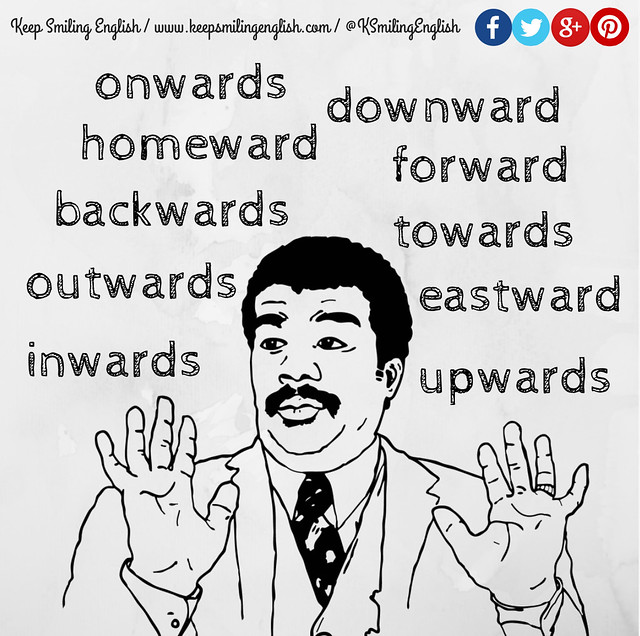Have you ever noticed how many words there are in English with the suffix «-ward(s)»? No? What about the ones in the picture below?
See? So what do all these words have in common. According to the Oxford Dictionary, this suffix is added to nouns of place or destination and to adverbs of direction. So basically when we say «upwards«, we mean «to a higher position«; when we say «skywards«, we mean «in the direction of the sky«; and so on. Another word with this suffix is «towards», which is actually a preposition that means «in the direction of«. Let’s see some examples with some of these words:
He looked backwards to see if someone was following him.
Could you please move your car a little forward? I’ll have just enough space to park my scooter.
The main character appeared again toward the end of the film. (toward the end = near the end)
Lee was stuck in a downward spiral, things seemed to be getting worse all the time.
As a quick pronunciation tip, you should know that «-ward» is generally pronounced /wəd/ (short sound) except in «toward», because it’s the only one in which the stress falls on «-ward». In this case, we pronounce it /wɔːd/ (long /o/).
In most cases, the speaker can choose whether to use the «-s» or not. This will probably depend on the variety of English you speak or are more used to. In my case, for example, I say «backwards» with «-s», but I say «forward» without «-s».
So that’s it, guys. Are you looking forward to KSE’s next post? I sure am!
Don’t forget to subscribe and follow KSE on Facebook, Twitter, Pinterest & Google+.
Keep Smiling! 😉




